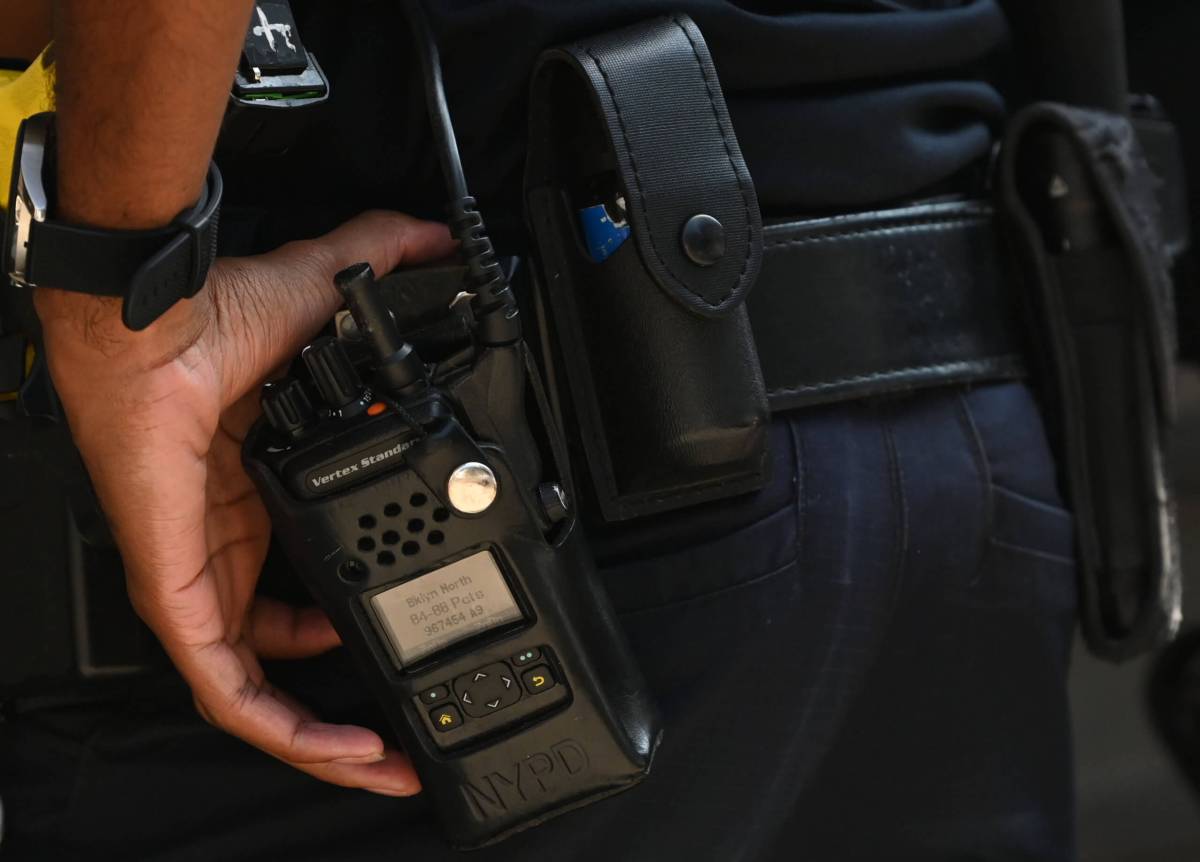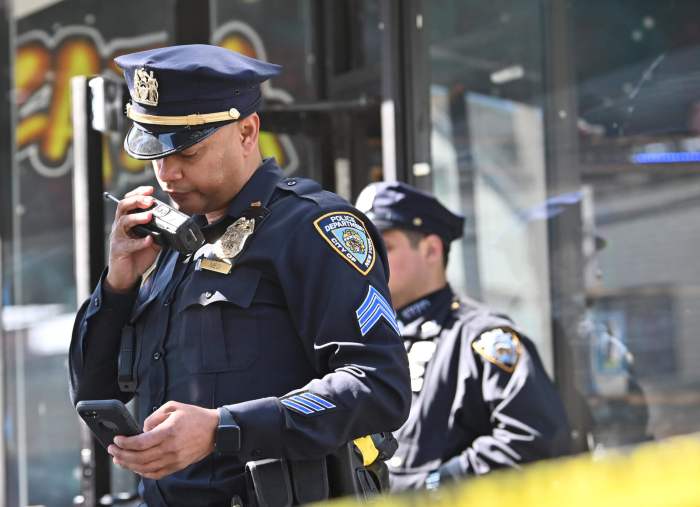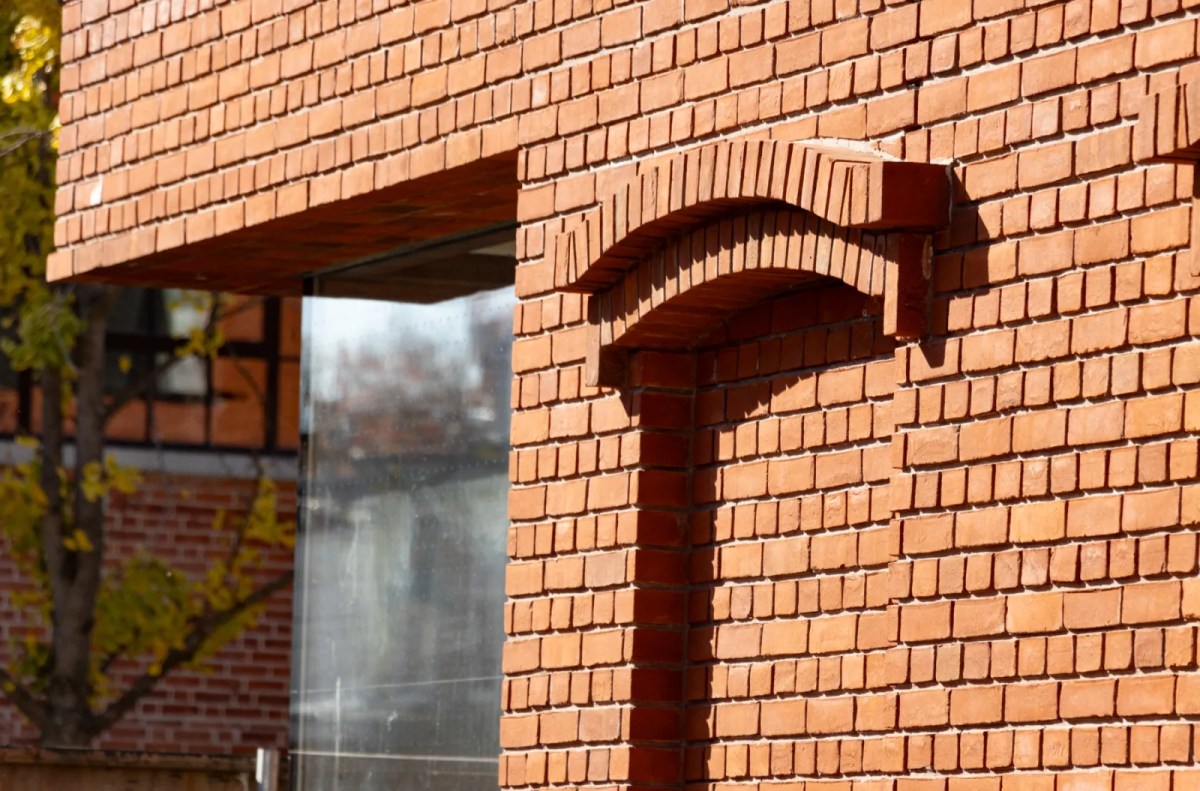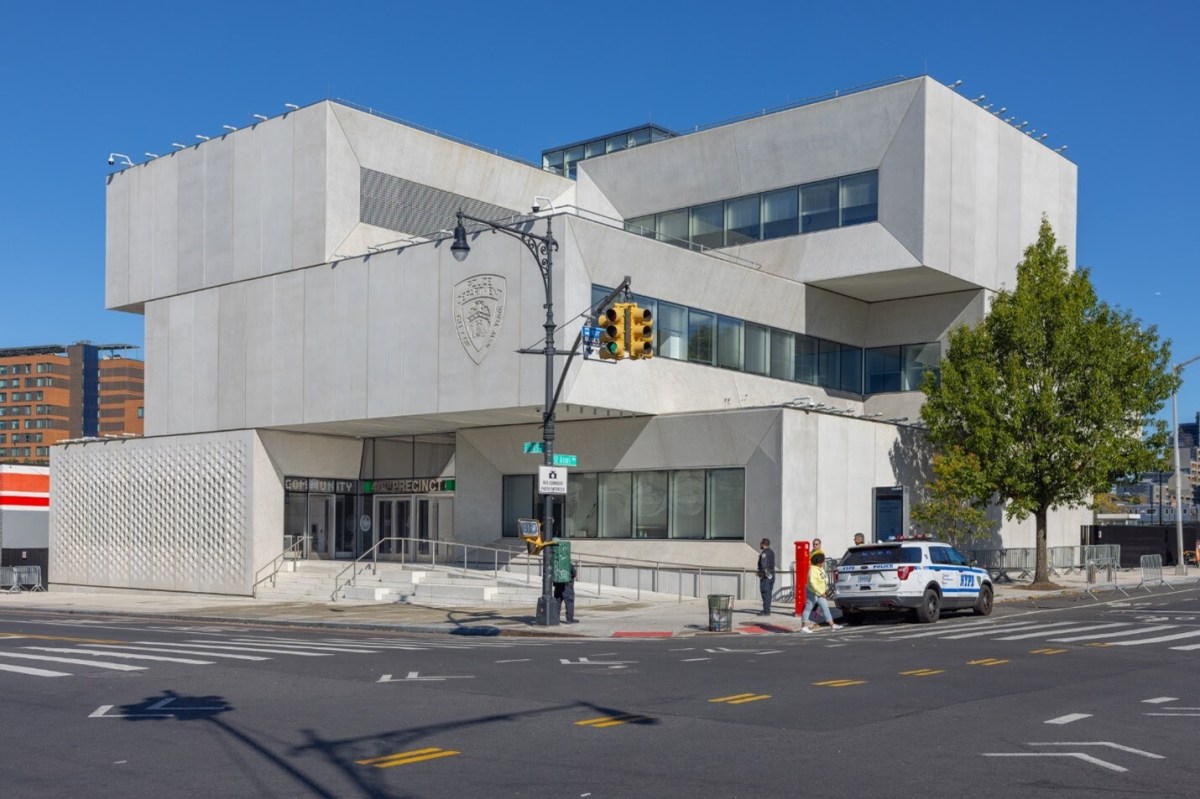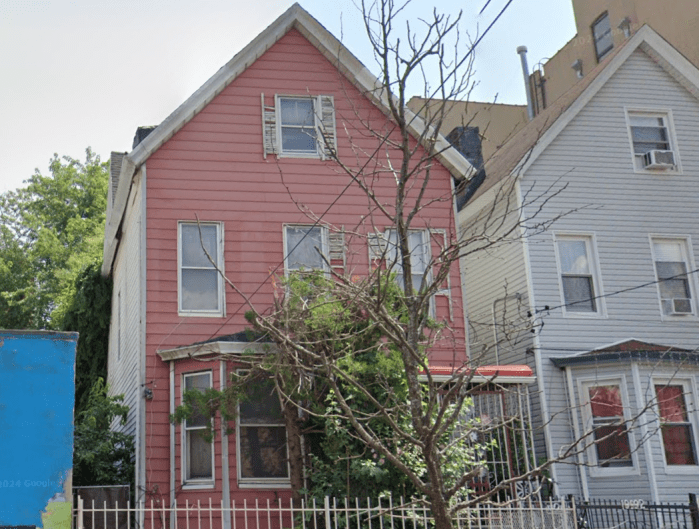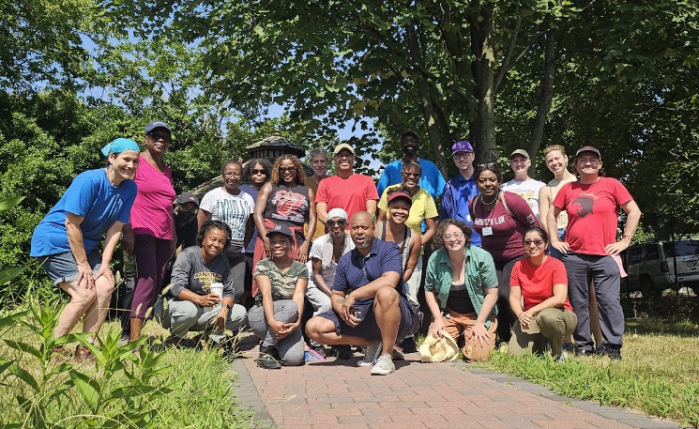NYPD police radios may go dark by late 2023 or 2024 — potentially cutting off the public, volunteer emergency groups and the media from day-to-day radio communications.
More importantly, it may leave decisions on publicly disclosing news incidents largely in the hands of the police themselves, according to sources within and outside the department.
Some police officers are cheering the news. Two credentialed members of the media recall pulling off the Belt Parkway in Brooklyn onto an emergency lane to investigate a crash. An NYPD Highway Patrol officer approached the vehicle, and both photographers displayed their NYPD issued press cards.
“I can’t wait for the city to take those radios away from you guys. I don’t like the media,” said the officer to press photographers Jon Farina and Lloyd Mitchell of amNewYork Metro. Without ordering them to leave the highway, he issued Farina a summons for stopping off the highway to investigate a potential story.
Farina, a freelance photographer and owner of the car, said he was incredulous. Farina, known for his historic video and photography on Jan. 6, 2021 Capitol attacks that showed a police officer being crushed in a doorway, is due in traffic court in December.
But the officer who criticized Farina and Mitchell might have his way when the NYPD encrypts all of its police radios with a flick of a switch, making their communications secret to the media and the public at large.
The NYPD has been suggesting the media might be able to monitor some radio transmissions with a smartphone app — controlled by the NYPD with possible delay, editing, eliminating an essential city-wide frequency and with the department choosing who might have access with a possible subscription fee involved.
It is unclear whether the FDNY and EMS will follow suit, as they have the same radios and require “interoperability,” which means they need to be able to talk to police.
Questions about the new system, costing both federal and city coffers so far about $500 million, were answered by an unnamed NYPD spokesperson with this statement:
“The NYPD is undergoing a systems upgrade that is underway and that will be complete after 2024. This infrastructure upgrade allows the NYPD to transmit in either an encrypted or non-encrypted format. Some parts of the city have had the necessary equipment installed and the Department will begin testing the technology in these areas later this year. We are currently evaluating encryption best practices and will communicate new policies and procedures as we roll out this upgraded technology. We will listen to and consider the needs of members of the media when making these decisions.”
‘A real danger to transparency’
The media has been monitoring police radio transmissions since the 1940s when photographer Arthur Felig, better known as the famous “Weegee,” was given a receiver by the NYPD to provide him with breaking news feeds because they believed the public’s right to know was paramount.
Police radio scanners were later made programmable to monitor individual police and fire radio frequencies.
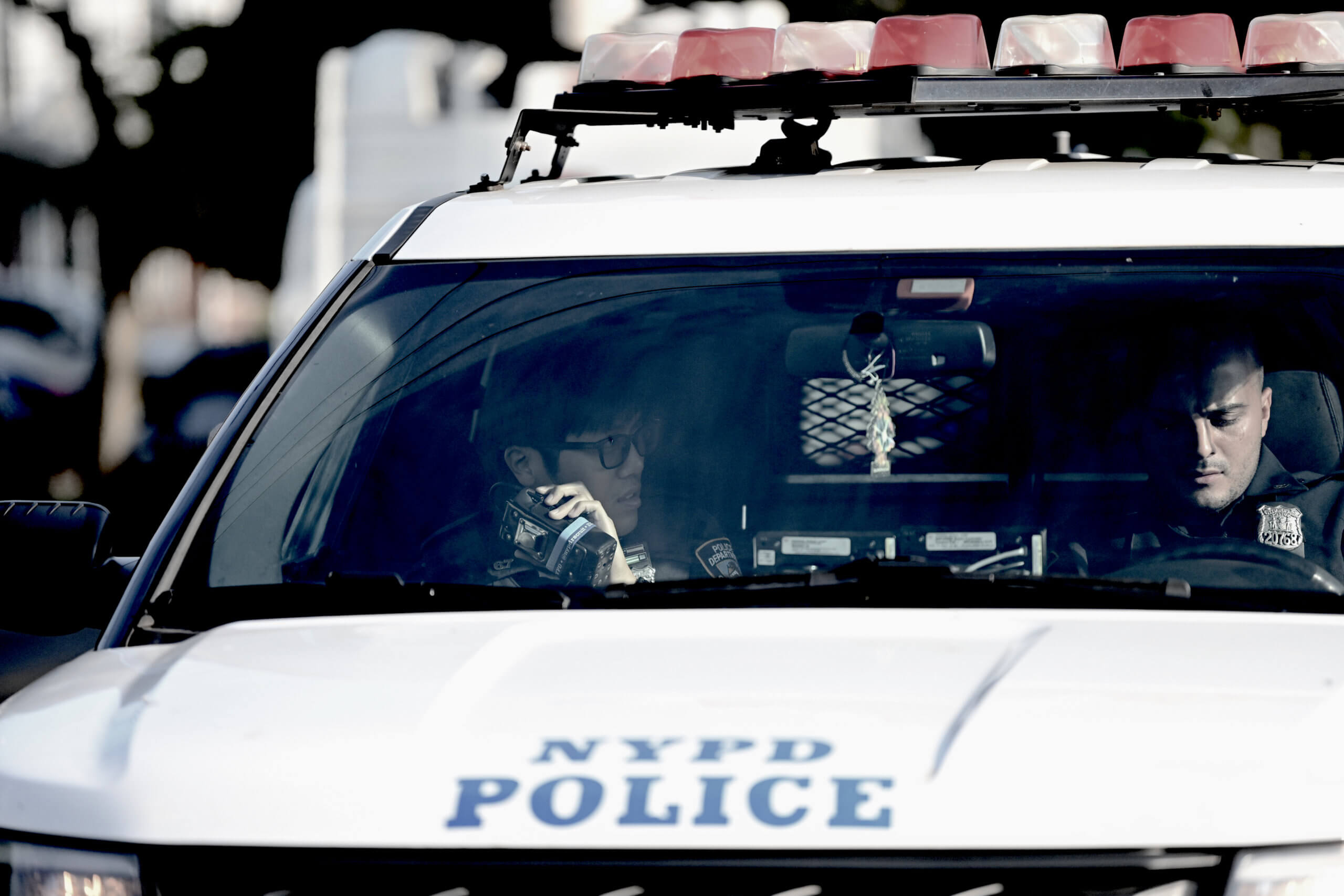
On July 17, 2014, Daily News photographer Ken Murray, while monitoring police radios, picked up cryptic radio transmissions in Staten Island leading him to photographing the scene of the choke hold death of Eric Garner and obtaining the video that set off protests against police brutality.
“I was driving through Staten Island headed to a photo job when a call came in over the police radio,” Murray wrote in a 2015 Daily News article recalling his experience covering the Garner death. “The voice called for a mobilization of cops to a crime scene. Normally, they state what kind of crime it is; in this case, they didn’t. That kind of set off a bell.”
Bruce Cotler, president of the New York Press Photographers Association, said that story and many others would’ve been lost if the media didn’t have access to radio transmissions including the shooting death of Sean Bell in Queens; the timely reporting and photos of the shooting death of Police Officers Rafael Ramos and Wenjian Liu in 2014; and might’ve caused a severe delays of information on the attacks on the World Trade Center in 1993 and on 9/11.
“Cutting off the media from getting emergency transmissions represents the clearest regression of the NYPD police of transparency in its history,” Cotler said. “We believe shutting down radio transmissions is a danger to the public and to the right of the public to know about important events. Without the ability to monitor radios, the NYPD will have full control of information and that is a real danger to transparency.”
The NYPD argument for encryption and modernization of systems is not without merit. Officials say members of the public have used radio transmissions for alleged nefarious reasons or have attempted to interfere with communications.
About 10 years ago, the Department of Justice mandated that police agencies observe privacy, prompting some departments to encrypt their radios to the detriment of transparency, open government advocates say. This despite very NYPD officer now reports personal information on department issued smart phones.
When Nassau County encrypted their radios in 2017, news organizations lost all breaking news other than what Nassau County police reported via email or social media. Sometimes, news incidents are not reported to media until days later or not at all.
Former Deputy Commissioner for Public Information John Miller, who admitted to growing up listening to police radios and was a breaking news reporter earlier in his career, had alleged in the past that criminals have used that information to commit crimes.
One such incident that stood out for officials occurred during the 2020 Black Lives Matter protests turned riots in Brooklyn’s 88th Precinct in Cobble Hill — when protestors, using Chinese-made Baofeng radios, taunted police commanders, interfered with emergency communications and in one case, threatened the life of a police captain. Cops were injured and property damaged as commanders struggled to communicate.
No arrests were ever made for those radio intrusions. However, police officials say stolen police radios have in the past resulted in communication interference, delaying emergency responses in several parts of the city.
The new radios AP24s, made by Motorola and costing upwards of $8,000 a piece, would be rendered immobilized remotely should an officer misplace or lose it.
The department has spent nearly half a billion dollars on changing and upgrading communications during the past five years – funds that came from federal grants and the city budget. This past year, the NYPD was granted $42 million more in their effort to upgrade communications.
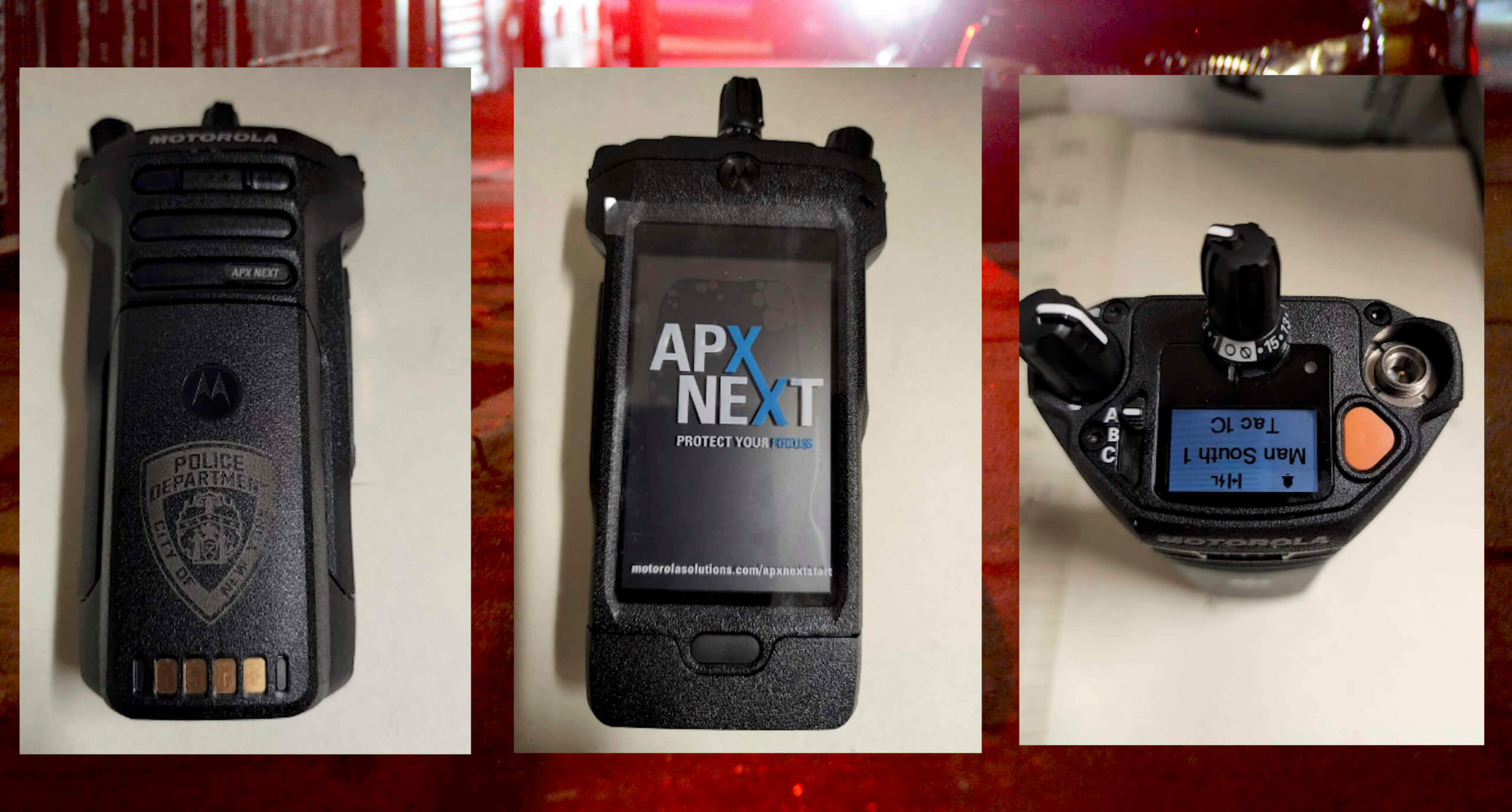
The NYPD currently provides every police officer with a smartphone, giving officers the ability to provide personal information to commanders and dispatch to minimize sensitive information from going out to the public that might compromise investigations. Current radio transmissions provide only basic information on breaking news, a vital tool for the media to make timely reports on crime and emergency situations.
Deputy Commissioner Julian Philips, a former member of the media himself, said the department is working on an app that would enable those they choose to be able to monitor police communications. He provided no further information on this development.
Effects on other parts of the country
Nassau County has been encrypted for years, with few negative incidents ever reported to members of the media. Howard Schnapp chases news in Long Island, mostly for Newsday.
“We now rely on tips and groups that you must be invited — if nobody tipped us, you don’t hear about stories for three days later,” Schnapp said of his difficulty covering Nassau police incidents. “The news media in Long Island slugged it off – they didn’t want to offend anyone. The police say the radios were a ‘security threat’ so they cut us all off and we were all screwed. Now we are at their beck and call.”
In other parts of the country, some entire city’s departments have made their communications secret.
The California Law Enforcement Telecommunications System opened the door to encrypt communications in late 2020 when it said police agencies have to protect “identifying information” during transmission. But the agencies that shut down access are completely dark, not just the “identifying information” that the directive called for.
Some municipal police agencies fully encrypted thereafter. As a result, California State Senator Josh Becker introduced Senate Bill 1000, known as the Public’s Right to the Police Radio Communications Act. The bill failed in committee, but Becker has said he intends to reintroduce the bill.
Tim Walton, a breaking news videographer with NBC in Los Angeles, said the bill was killed “for unknown reasons.” he said however, that the city of Palo Alto unencrypted their radios to regain transparency.
“The day of Bonnie and Clyde open radio monitoring is gone. Some agencies site officer safety and privacy,” Walton said. “There are certainly ways to deal with that. We all remember Rodney King (beaten on an LA highway by cops) who were using mobile terminals where they were making racist comments. Fire departments recognize the importance for the public to know, but the idea that police are going to hide behind encryption in my view is a chance of causing greater harm than having information there. You want to know if shots are being fired and who’s shooting.”
Karl Mondon, a photojournaist with the San Jose Mercury for more than 33 years, is forced to find other ways to cover crime as his local police force is encrypted. Mondon worked closely with the Society of Professional Journalists freedom of information committee to get the encryption bill passed.
“Not being able to hear the first call takes away my ability to be there during decisive moments,” Mondon said. “Information comes in late from Citizen and San Jose proposed they would put up info – they will decide what to put out.”
Mondon said his group sent letters of support for the California bill.
“We finally had momentum, especially when Palo Alto reversed, but then somehow it failed to pass committee – we are hopeful the bill will be implemented as this is contrary to freedom of information,” he said.
Local reaction takes wait and see
Oliya Scootercaster, a videographer for Freedom News TV provides breaking news coverage to every major news station and was recently in war-torn Ukraine.
She said that if radio access is blocked, “we would have to depend on the NYPD to tell us what is going on, and sometimes they don’t say anything for 24 hours, and by then we won’t know what really happened.”
“Our whole business depends on access – some places provide radios to know what is happening – otherwise we will have to be creative,” Scootercaster said. “It’s the job of journalists to hold officials accountable and if we cant be there to see what is happening, who will do it?”
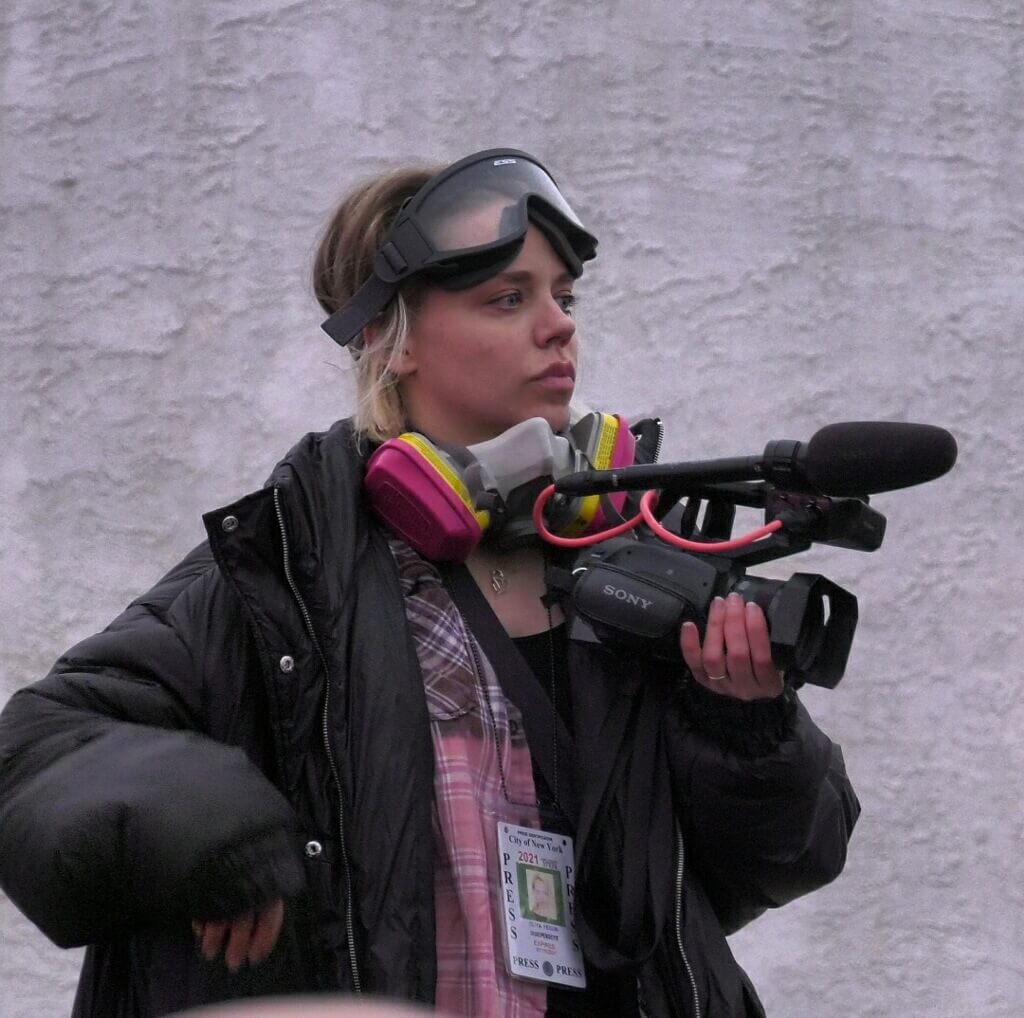
Paul Martinka, freelancer for the New York Post and considered one of the most prolific breaking news photographers in the city, said he believes encryption would hurt his ability to do his job, but “there’s not much we can do.”
“I’ll probably depend on Citizen App and people calling from the streets and then look for reconfirm of those reports, but in the end, what are we going to do?” Martinka said as his radio blared in the background in his vehicle.
“A lot of police departments are now encrypted and it is no longer available and may be the public shouldn’t have it, but the media should. Of course it will affect us no doubt — things that affect your life, you just adapt and deal with it. If you get laid off, well, you just move on – there is nothing you can do about it,” he added.
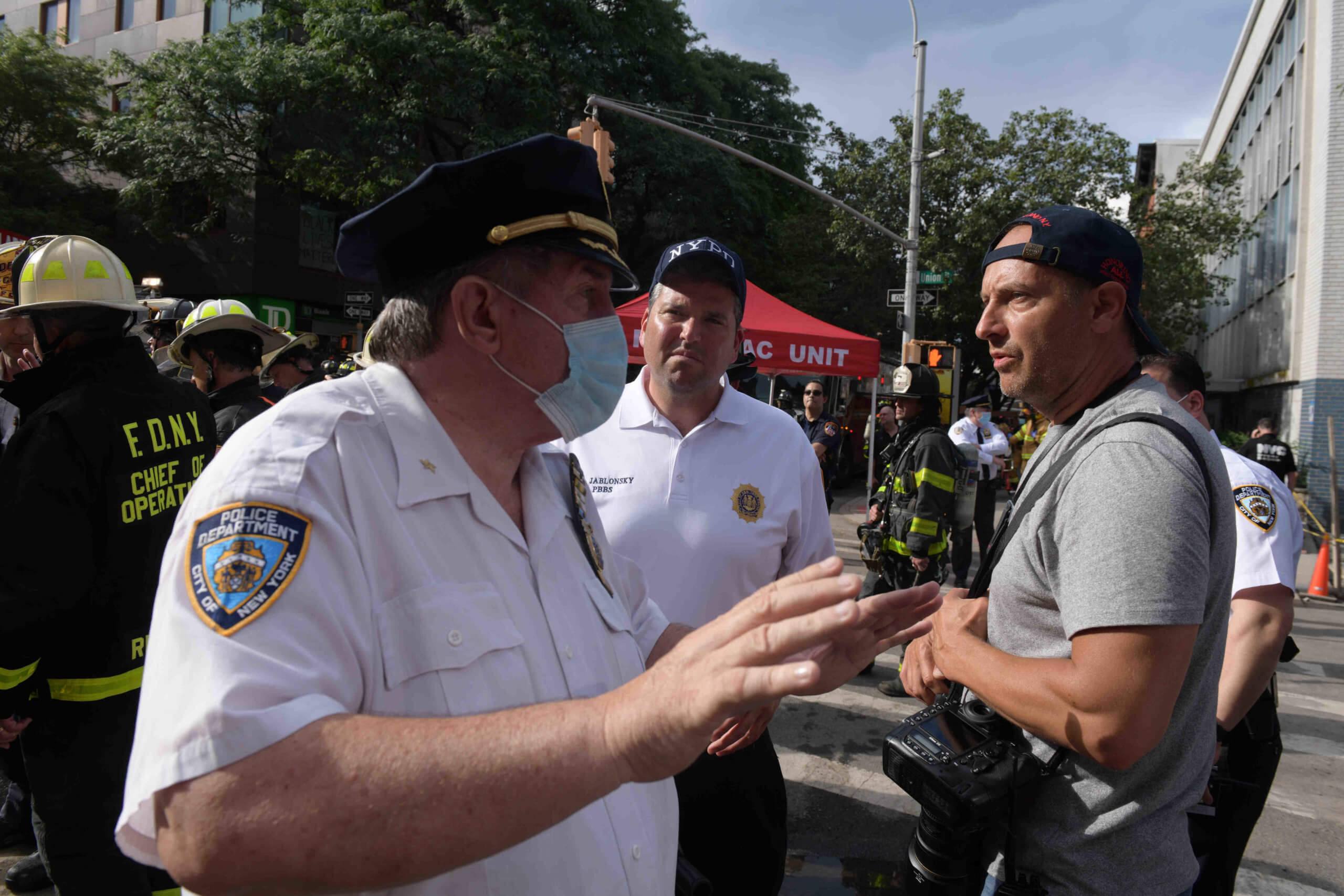
Mickey Osterriecher, chief counsel for the National Press Photographers Association has been helping media around the country to gain access to radio feeds where police have encrypted radio transmissions.
“It is unfortunate in age when we need more transparency with government agencies, we are getting less,” said Osterriecher, who at one time was a news photographer himself. “As the public relies on media to provide information as to what is going on, the media will have less information to provide on matters of public concern. While there is sometimes a fine line between officer safety and public transparency, we hope NYPD will consider all of this and provide some means whereby media can monitor their transmissions.”
When the specter of encryption first surfaced in 2019, the Reverend Al Sharpton said he would intervene if necessary to prevent the NYPD from reversing transparency.
Other community advocates wondered how transparency would be maintained, including Anthony Beckford, president of the Brooklyn Chapter of Black Lives Matter and part of Cop Watchers.
“(Encryption) is nothing more than them hiding their actions – they may try to make the excuse of public safety, but it is just as important for people to know what they are doing,” Beckford said. “I remember many times as a cop watcher we would hear joking around, violating protocols much of which we would never have known. Having the media knowing what is going on saved many people. The attempt to encrypt is a way to hide and we were promised transparency – this is not accountability.”
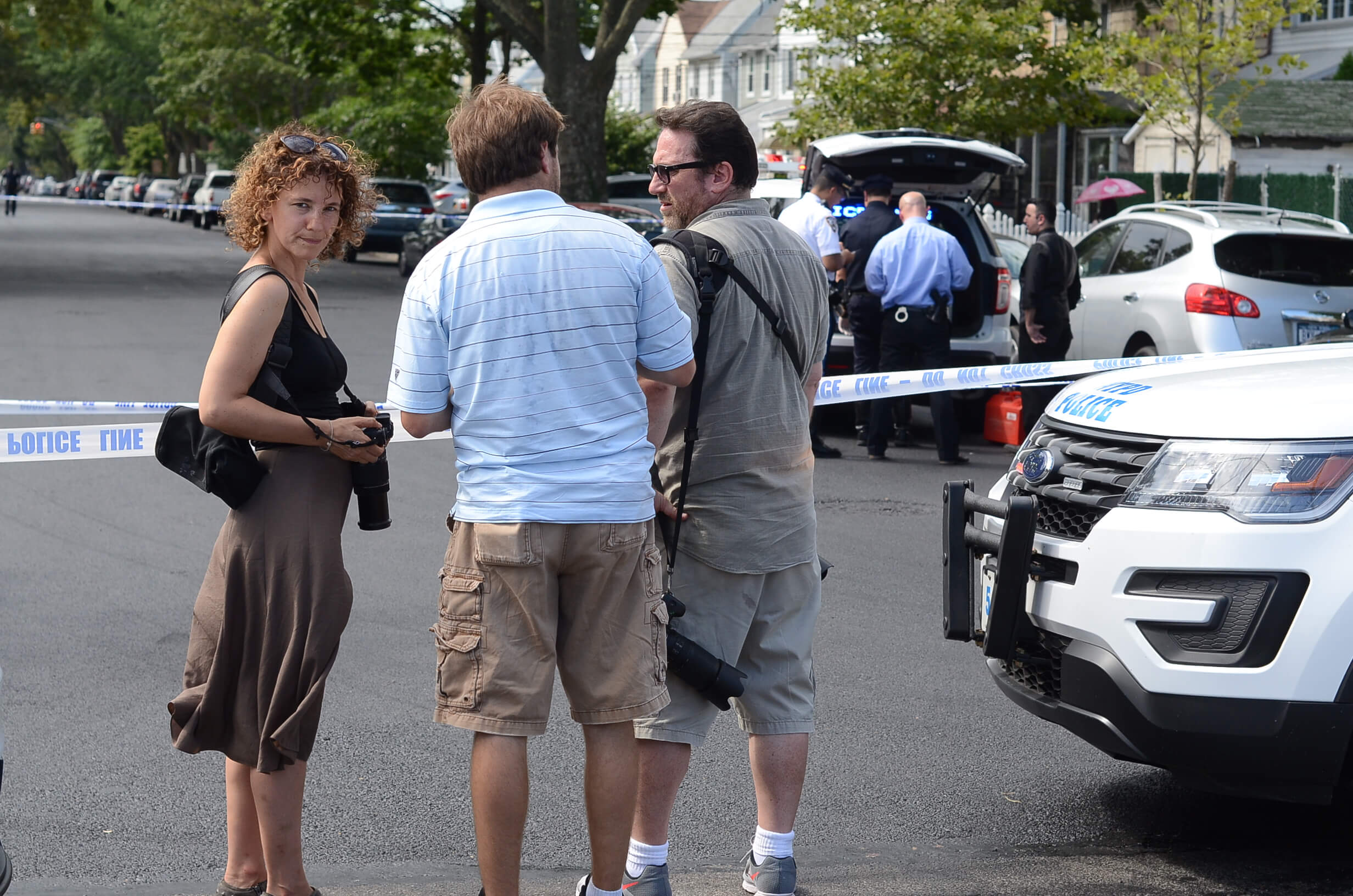
Read more: Historic Greenwich Village House in Danger



